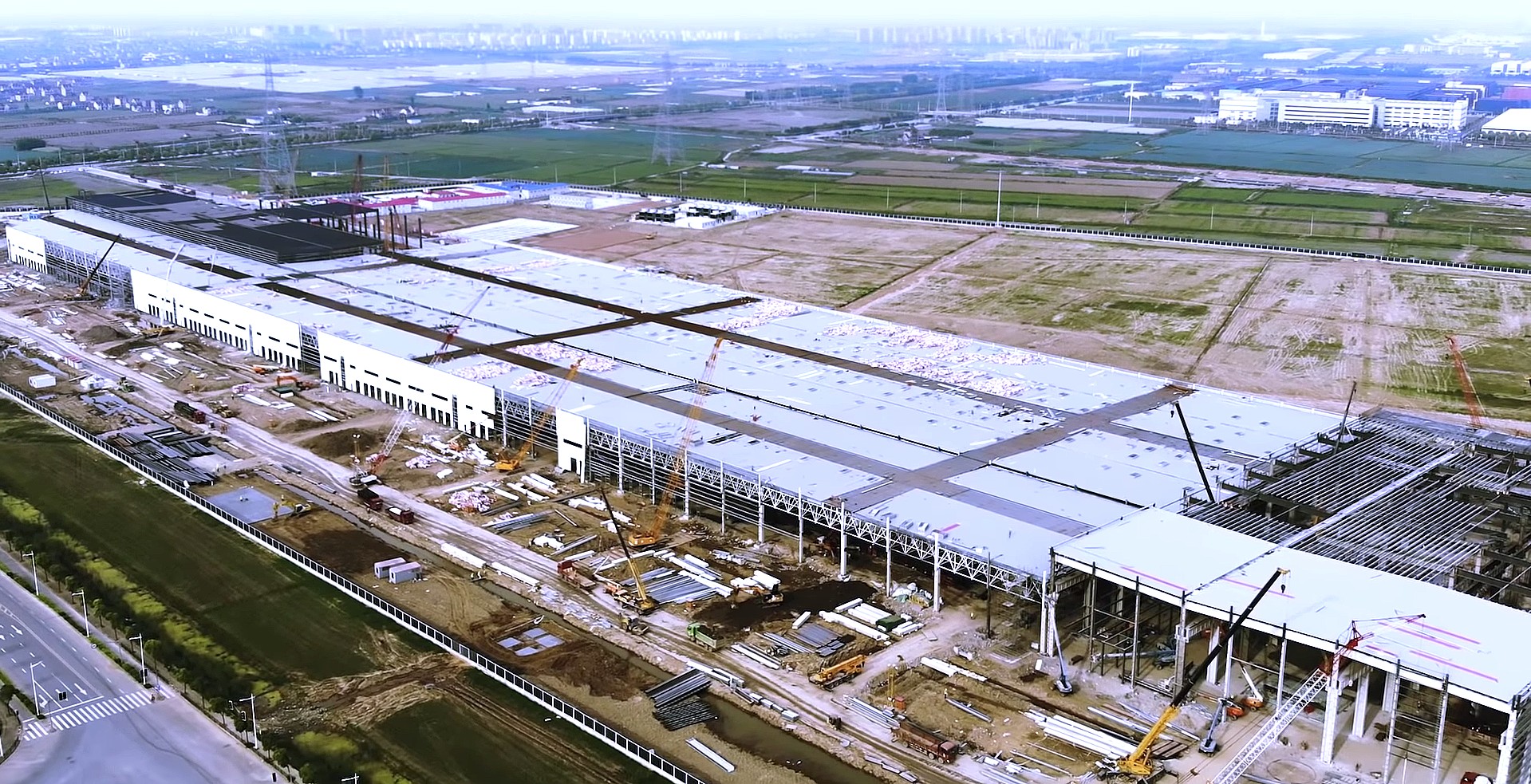
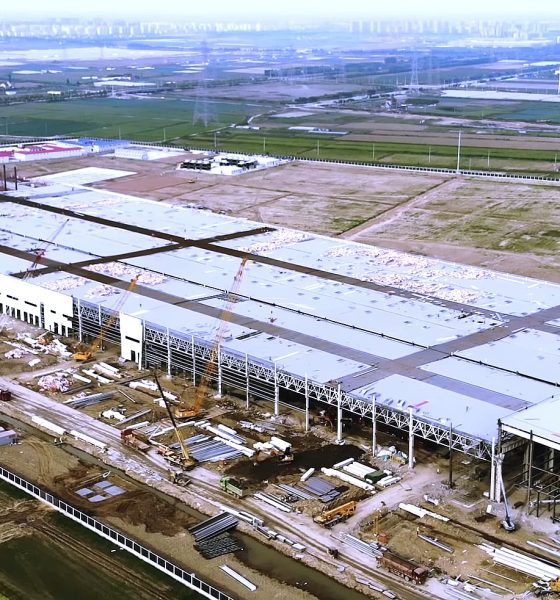
News
Tesla Gigafactory 3 is what happens when Elon Musk’s vision is taken seriously
To say that the buildout of Tesla’s Gigafactory 3 in China is fast is a gross understatement. Within a few months, Tesla’s 864,885-square meter lot in Shanghai’s Lingang Industrial Area has been transformed from a large, muddy field into a site where a massive electric car factory is taking shape. Every update of Gigafactory 3 shows the facility making visible progress. This week alone, footage from the site revealed that workers have practically completed the roof of Tesla’s general assembly building, and walls are already being set built.
Back in March, Shanghai official Chen Mingbo stated that the initial buildout of the factory should be completed by May. Considering the speed of the facility’s construction, this insane timeframe seems to be on track. If this target is accomplished, Tesla could start Model 3 trial production as early as September. That’s significantly ahead of Elon Musk’s own estimates, which pointed to initial production starting near the end of 2019. Reports from China also indicate that Gigafactory 3 could set a record for fastest factory buildout in the country.
The original timeline for Gigafactory 3 was actually far more conservative, with Tesla noting that it expected vehicle manufacturing to start roughly two years after construction begins. The timeframe, which was classic Elon Musk in the way that it is optimistic and ambitious, faced relentless skepticism in the United States. Consumer Edge Research senior auto analyst James Albertine, in a segment of Bloomberg Markets, flat-out stated that Tesla’s targets for Gigafactory 3’s construction were simply “not feasible.”
The reaction to Gigafactory 3’s initial timetable is quite reflective of the amount of skepticism and criticism thrown at Tesla and Elon Musk on a rather consistent basis. In the United States, Musk pretty much faces opposition at every turn. It is not uncommon to see reports about Tesla having a negative slant. People betting on Tesla’s failure such as short-sellers consistently accuse Musk of being a fraud as well, while mocking him on social media platforms such as Twitter for his alleged shortcomings. One particularly passionate short-seller actually received a restraining order after allegedly trespassing, harassing, and causing harm to Tesla employees.
With the drama surrounding Tesla, it is no wonder that Elon Musk wanted to take the company private last year. When Musk pitched the idea to investors, he argued that it would be a lot easier for Tesla to pursue its goals if it could operate without the short-term pressures of Wall St and the constant barrage of noise from critics that stand to receive financial gain if the electric car maker were to fall. The take-private attempt ultimately fell through after Elon Musk backed out of a ~$30 billion deal from investors that included Volkswagen AG. In the Q1 2019 earnings call, the CEO noted that a non-public Tesla will not be happening anytime soon. “Unfortunately, that ship had sailed,” Musk said.
It could be said that the nearly unbelievable pace of Gigafactory 3’s construction is what happens when Elon Musk’s ambitious vision is embraced without noise or unnecessary drama. There were no controversies among China’s workforce when Elon Musk noted that he expects electric car production to begin by the end of the year. Instead, the company’s construction partner took the CEO’s ambitious timeframe seriously and did what was necessary to build Gigafactory 3 as quickly as possible, including adopting 24/7 work. Going a step further, the country even pursued a target completion date that exceeds Elon Musk’s already ambitious timeframe. Today, Model 3 trial production is expected to start as early as September.
If there is a lesson that can be learned from Gigafactory 3, it is that visionaries such as Elon Musk could accomplish great things if their targets are supported and taken seriously. This is something that China seems to be all too willing to give Elon Musk, as could be seen when he met with Chinese Premier Li Keqiang in Beijing last January. During his meeting with Li, Musk acted like his usual self, throwing out grand ideas about Gigafactory 3 and mentioning his vision of creating a facility that acts almost like a “living being.” Li proved quite open to Musk’s ideas, even offering the CEO a ‘Chinese Green Card’ so he could openly pursue his plans in the country.
Demonstrating this point, here’s the Gigafactory 3 site in early March.
And here’s a flyby of Gigafactory 3 on May 7, 2019, roughly two months later.

News
Tesla adds new surprising fee to Robotaxi program
“Additional cleaning was required for the vehicle after your trip. A fee has been added to your final cost to cover this service. Please contact us if you have any questions.”
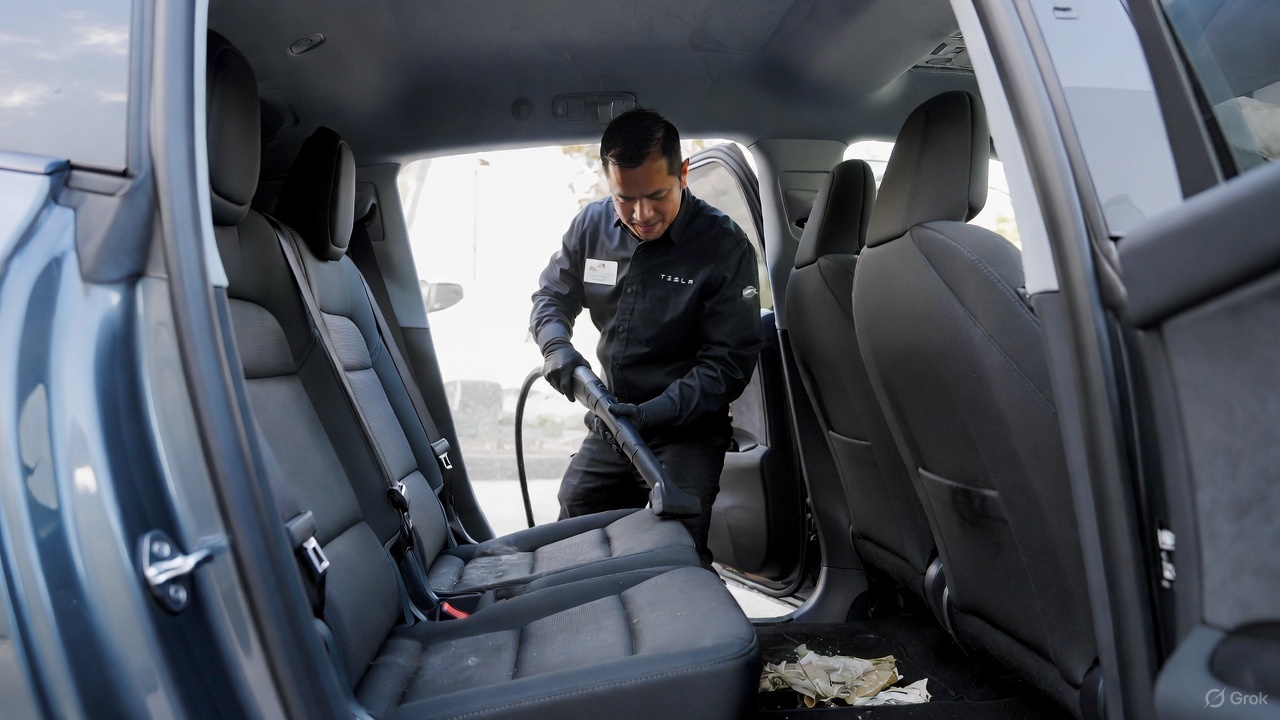
Tesla has added a new and somewhat surprising fee to the Robotaxi program. It’s only surprising because it was never there before.
Tesla shocked everyone when it launched its Robotaxi platform and offered riders the opportunity to tip, only to tell them they do not accept tips. It was one of the company’s attempts at being humorous as it rolled out its driverless platform to people in Austin.
As it has expanded to new cities and been opened to more people, as it was yesterday to iOS users, Tesla has had to tweak some of the minor details of the Robotaxi and ride-hailing platforms it operates.
First Look at Tesla’s Robotaxi App: features, design, and more
With more riders, more vehicles, and more operational jurisdictions, the company has to adjust as things become busier.
Now, it is adjusting the platform by adding “Cleaning Fees” to the Robotaxi platform, but it seems it is only charged if the vehicle requires some additional attention after your ride.
The app will communicate with the rider with the following message (via Not a Tesla App):
“Additional cleaning was required for the vehicle after your trip. A fee has been added to your final cost to cover this service. Please contact us if you have any questions.”
The cost of the cleaning will likely depend on how severe the mess is. If you spill a soda, it will likely cost less than if you lose your lunch in the back of the car because you had a few too many drinks.
This is an expected change, and it seems to be one that is needed, especially considering Tesla is operating a small-scale ride-hailing service at the current time. As it expands to more states and cities and eventually is available everywhere, there will be more situations that will arise.
The messes in vehicles are not a new situation, especially in a rideshare setting. It will be interesting to see if Tesla will enable other fees, like ones for riders who request a ride and do not show up for it.
News
Tesla Model Y sold out in China for 2025
Customers who wish to get their cars by the end of the year would likely need to get an inventory unit.
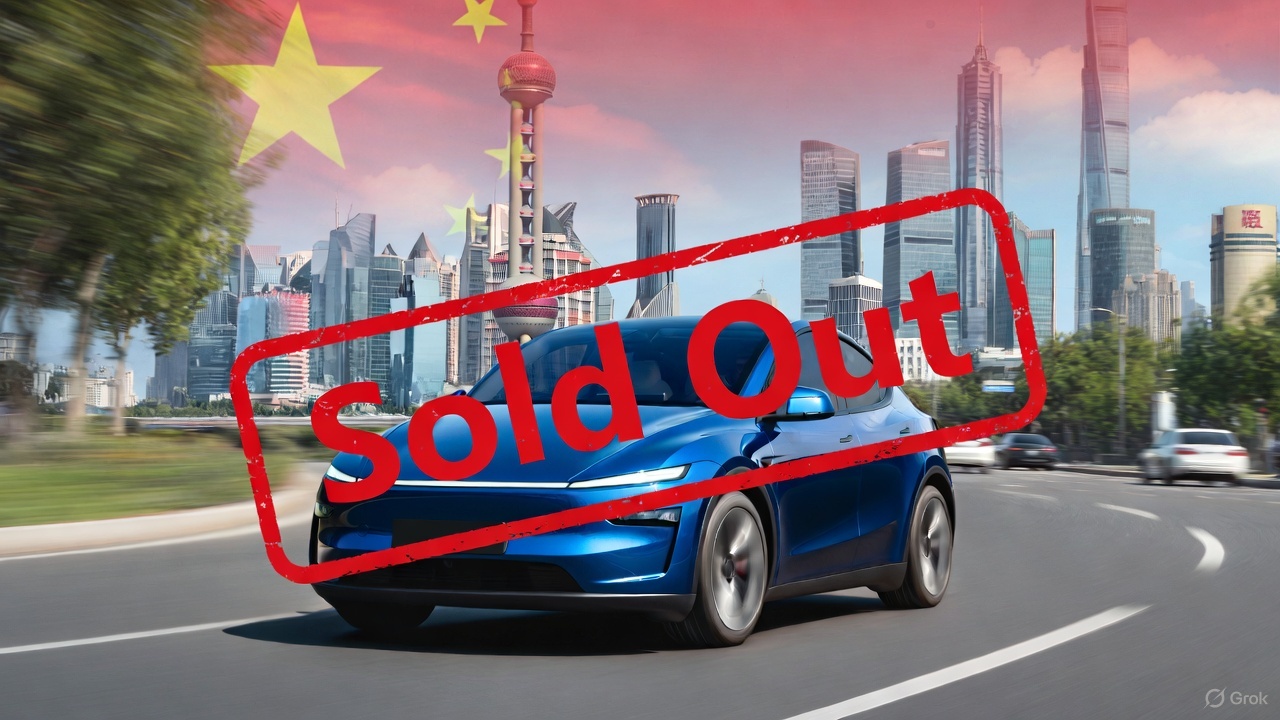
It appears that the Model Y has been sold out for 2025 in China. This seems to be true for the four variants of the vehicle that are currently offered in the country.
Tesla China’s order page update
A look at Tesla China’s order page for the Model Y shows a message informing customers that those who wish to guarantee delivery by the end of the year should purchase an inventory unit. This was despite the Model Y RWD and Model Y L showing an estimated delivery timeline of 4-8 weeks, and the Model Y Long Range RWD and Model Y Long Range AWD showing 4-13 weeks.
As per industry watchers, these updates on the Model Y’s order page suggest that Tesla China’s sales capacity for the remainder of 2025 has been sold out. The fact that estimated delivery timeframes for the Model Y Long Range RWD and AWD extend up to 13 weeks also bodes well for demand for the vehicle, especially given strong rivals like the Xiaomi YU7, which undercuts the Model Y in price.
Tesla China’s upcoming big updates
What is quite interesting is that Tesla China is still competing in the country with one hand partly tied behind its back. So far, Tesla has only been able to secure partial approval for its flagship self-driving software, FSD, in China. This has resulted in V14 not being rolled out to the country yet. Despite this, Tesla China’s “Autopilot automatic assisted driving on urban roads,” as the system is called locally, has earned positive reviews from users.
As per Elon Musk during the 2025 Annual Shareholder Meeting, however, Tesla is expecting to secure full approval for FSD in China in early 2026. “We have partial approval in China, and we hopefully will have full approval in China around February or March or so. That’s what they’ve told us,” Musk said.
News
Tesla Full Self-Driving appears to be heading to Europe soon
For years, Musk has said the process for gaining approval in Europe would take significantly more time than it does in the United States. Back in 2019, he predicted it would take six to twelve months to gain approval for Europe, but it has taken much longer.
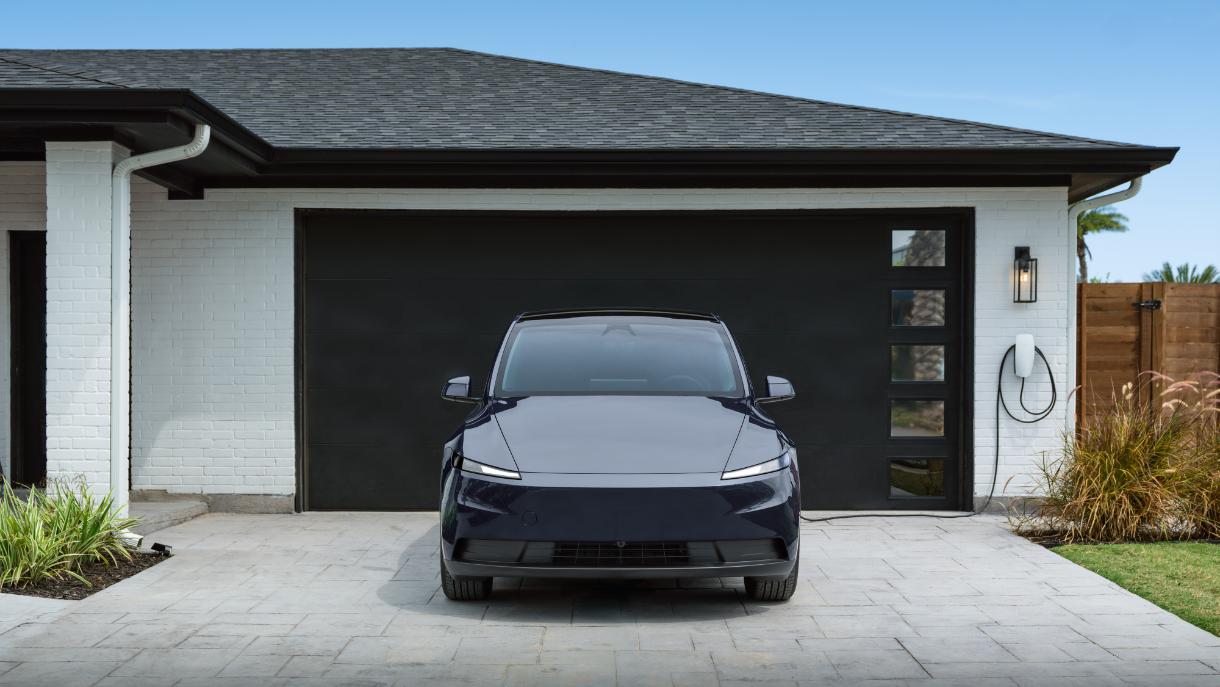
Tesla Full Self-Driving appears to be heading to Europe soon, especially as the company has continued to expand its testing phases across the continent.
It appears that the effort is getting even bigger, as the company recently posted a job for a Vehicle Operator in Prague, Czech Republic.
This would be the third country the company is seeking a Vehicle Operator in for the European market, joining Germany and Hungary, which already have job postings in Berlin, Prüm, and Budapest, respectively.
🚨Breaking: Tesla is hiring vehicle operators in Prague. pic.twitter.com/CbiJdQLCLj
— Tesla Yoda (@teslayoda) November 19, 2025
This position specifically targets the Engineering and Information Technology departments at Tesla, and not the Robotics and Artificial Intelligence job category that relates to Robotaxi job postings.
Although there has been a posting for Robotaxi Operators in the Eastern Hemisphere, more specifically, Israel, this specific posting has to do with data collection, likely to bolster the company’s position in Europe with FSD.
The job description says:
“We are seeking a highly motivated employee to strengthen our team responsible for vehicle data collection. The Driver/Vehicle Operator position is tasked with capturing high-quality data that contributes to improving our vehicles’ performance. This role requires self-initiative, flexibility, attention to detail, and the ability to work in a dynamic environment.”
It also notes the job is for a fixed term of one year.
The position requires operation of a vehicle for data collection within a defined area, and requires the Vehicle Operator to provide feedback to improve data collection processes, analyze and report collected data, and create daily driving reports.
The posting also solidifies the company’s intention to bring its Full Self-Driving platform to Europe in the coming months, something it has worked tirelessly to achieve as it spars with local regulators.
For years, Musk has said the process for gaining approval in Europe would take significantly more time than it does in the United States. Back in 2019, he predicted it would take six to twelve months to gain approval for Europe, but it has taken much longer.
This year, Musk went on to say that the process of getting FSD to move forward has been “very frustrating,” and said it “hurts the safety of the people of Europe.”
Elon Musk clarifies the holdup with Tesla Full Self-Driving launch in Europe
The latest update Musk gave us was in July, when he said that Tesla was awaiting regulatory approval.








